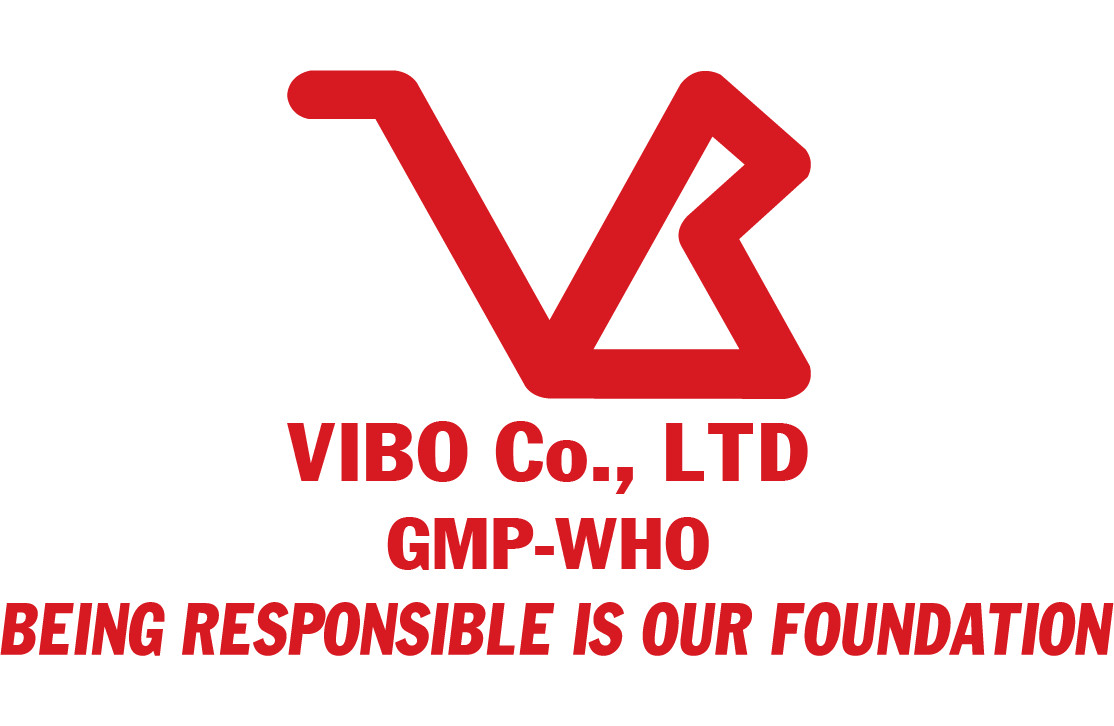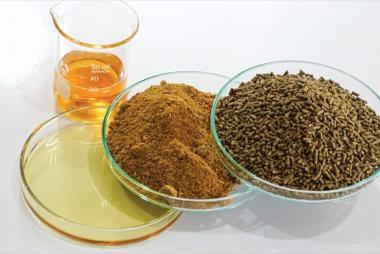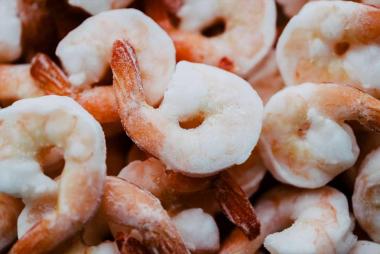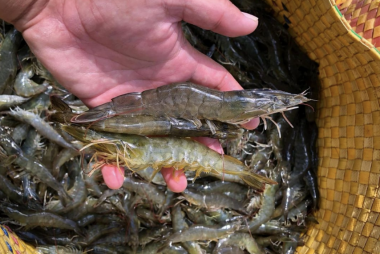- Address: Lot No. 20, Zone G, D1 Street, An Ha Industrial Park, Tan Vinh Loc Commune, Ho Chi Minh City
- Phone: (84-28) 668.36156 / 668.36158
- Hotline: 1800.9435
- Fax: (84-28) 3620.4694
- Email: vibo@vibo.com.vn
- Website https://vibo.com.vn/

Urgent appeal to control spread of the shrimp microsporidian parasite Enterocytozoon hepatopenaei (EHP)
Urgent appeal to control spread of the shrimp microsporidian parasite Enterocytozoon hepatopenaei (EHP)
What is EHP?
Enterocytozoon hepatopenaei (EHP) is a microsporidian parasite that was first characterized and named from the giant or black tiger shrimp Penaeus monodon from Thailand in 2009 (Tourtip et al. 2009. J. Invertebr. Pathol. 102: 21-29). It was discovered in slow-growing shrimp but was not statistically associated with slow growth at that time. EHP is confined to the shrimp hepatopancreas (HP) and morphologically resembles an unnamed microsporidian previously reported in the HP of Penaeus japonicas from Australia in 2001. Together, these studies suggest that EHP is not an exotic pathogen but that it is endemic to Australasia. Later, it was found that EHP could also infect exotic Penaeus vannamei imported for cultivation in Asia and that it could be transmitted directly from shrimp to shrimp by the oral route (Tangprasittipap et al. 2013. BMC Vet Res. 9:139). This differed from the most common microsporidian previously reported from cotton shrimp, where transmission required an intermediate fish host, allowing disruption of transmission by the exclusion of fish from the production system.
Why is EHP important?
Although EHP does not appear to cause mortality, information from shrimp farmers indicates that it is associated with severe growth retardation in P. vannamei. Thus, we began to warn Asian farmers and hatchery operators after 2009 to monitor P. vannamei and P. mondon for EHP in broodstock and postlarvae (PL). However, the warnings were not heeded because of the overwhelming focus on early mortality syndrome (EMS) or acute hepatopancreatic necrosis disease (AHPND). We feared that lack of interest in EHP would lead to its build-up in production systems and that its spread would be masked by EMS/AHPND because it kills shrimp before the negative effects of EHP on growth are apparent. We feared that solution to the EMS/AHPND problem would probably lead to succeeding widespread problems with slow growth. Indeed, this seems to have happened in the past year or so. We now have information indicating that EHP outbreaks are occurring widely in China, Indonesia, Malaysia, Vietnam and Thailand. Very recently, we have also received samples PCR-positive for EHP from slow-growing shrimp in India. Thus, EHP is an emerging problem that is in urgent need of control.
How to control the international spread of EHP
A nested PCR detection method and a LAMP method are available to check feces of broodstock and to check whole PL for the presence of EHP (Tangprasittipap et al. 2013. BMC Vet Res. 9:139; Suebsing et al. 2013. J Appl Microbiol 114: 1254-1263). The pathogen can also be detected by light microscopy using a 100 times objective with stained HP tissue sections or HP smears, but this is based on finding the characteristic spores that are extremely small (less than 1 micron in length) and are sometimes produced only in small numbers, even in heavily infected specimens. Thus, the PCR detection method is preferred.
We have data indicating that most SPF stocks of P. vannamei imported to Thailand are negative for EHP but that they often become contaminated in recipient maturation facilities and hatcheries because of poor biosecurity. One serious fault in biosecurity is the widespread practice of using live animals (e.g., polychaetes, clams etc.) from local sources or as imports to feed broodstock shrimp, despite our constant warnings against the practice. We have firm data that some live polychaetes from local and imported sources in Asia can give positive PCR test results for both AHPND bacteria and EHP. However, there is also a possibility that some imported stocks of P. vannamei labeled SPF may also be positive for EHP since it is not on the OIE list that is used by many SPF suppliers or quarantine agencies responsible for confirming SPF status. This problem could be rectified by adding EHP to the SPF list of both suppliers and quarantine agencies. The feces of the broodstock can be tested for the presence of EHP by nested PCR.
The best approach for maturation and hatchery facilities to avoid EHP is to never use live animals (e.g., live polychaetes, clams, oysters, etc.) as feeds for broodstock. If this advice is ignored, at the very minimum, such feeds should be frozen before use since this would at least kill AHPND bacteria and EHP. Better would be pasteurization (heating at 70oC for 10 minutes) since it would also kill major shrimp viruses (which freezing would not). Another alternative would be to use gamma irradiation with frozen feeds.
How to control EHP in hatcheries
EHP and AHPND bacteria have both been found in broodstock from China, Vietnam, and Thailand. Both have also been reported from living polychaete samples used to feed broodstock shrimp. EHP can be suspected if post larvae from any hatchery grow slower than would be expected.
Therefore, the first issue is to ensure that broodstock maturation facilities and hatchery facilities are CLEAN! To achieve this goal, all shrimp must be removed from the hatchery and it should be washed followed by cleaning using 2.5% sodium hydroxide solution (25 gms NaOH/L freshwater) with the solution left on and washed off after 3 hours contact time. This treatment should include all equipment, filters, reservoirs, and pipes. After washing to remove the NaOH, the hatchery should be dried for 7 days. Then it should be rinsed down with acidified chlorine (200 ppm chlorine solution at pH <4. 5).
The next issue is the broodstock. As indicated above some SPF shrimp broodstock gave positive PCR test results for EHP but none for AHPND bacteria. Thus, purported SPF broodstock should also be checked for EHP while in quarantine and before being admitted to a cleaned maturation and hatchery facility. Our work in Thailand revealed that locally pond-reared broodstock derived from imported SPF stocks initially free of EHP showed very high levels of prevalence for EHP infection. As stated above, broodstock feces may be checked for EHP by nested PCR using DNA extracts from feces as the template. Confirmation should be conducted on HP tissue after the usefulness of the broodstock has expired.
How to control EHP in farms
For farmers, there are two main issues to contend with. The first issue is to ensure that the PL used to stock ponds are not infected with EHP. This can be done most easily by PCR testing. If DNA has already been extracted from the PL to check for AHPND bacteria by PCR, a portion of the same DNA extract can be used to test for EHP. A farmer should not use batches of PL positive for either of these pathogens for stocking ponds.
The second issue for farmers concerns the appropriate preparation of ponds between cultivation cycles, especially when a cultivation pond has previously been affected by EHP. The spores of EHP have thick walls and are not easy to inactivate. Even high levels of chlorine alone are not effective. In addition, potential environmental carriers are currently unknown. Both may remain in a pond after harvest and it is important that both be inactivated before the next cultivation cycle.
To disinfect earthen ponds of EHP spores, apply CaO (quicklime, burnt lime, unslaked lime, or hot lime) at 6 Ton/ha. Plow the CaO into the dry pond sediment (10-12 cm) and then moisten the sediment to activate the lime. Then leave for 1 week before drying or filling. After the application of CaO, the soil pH should rise to 12 or more for a couple of days and then fall back to the normal range as it absorbs carbon dioxide and becomes CaCO3.
A special warning for Mexico
There are rumors that the outbreaks of AHPND in Mexico originated from contaminated broodstock of P. vannamei illegally imported to Mexico from Asia for the production of PL to stock rearing ponds. If these rumors are true, given the high prevalence of EHP in Asia, it is quite probable that the imported shrimp would also have been infected with EHP. Thus, it is urgent that the Mexican quarantine authorities check their current and archived DNA samples used to monitor for AHPND bacteria by PCR to also check for the presence of EHP target DNA by PCR. If they find it, it would support the hypothesis that AHPND bacteria were imported from Asia. It is also possible that timely preventative measures or continued surveillance of imported, living shrimp stocks could prevent the unfortunate introduction and establishment of what is probably an exotic parasite to Mexico and the rest of the Americas.














